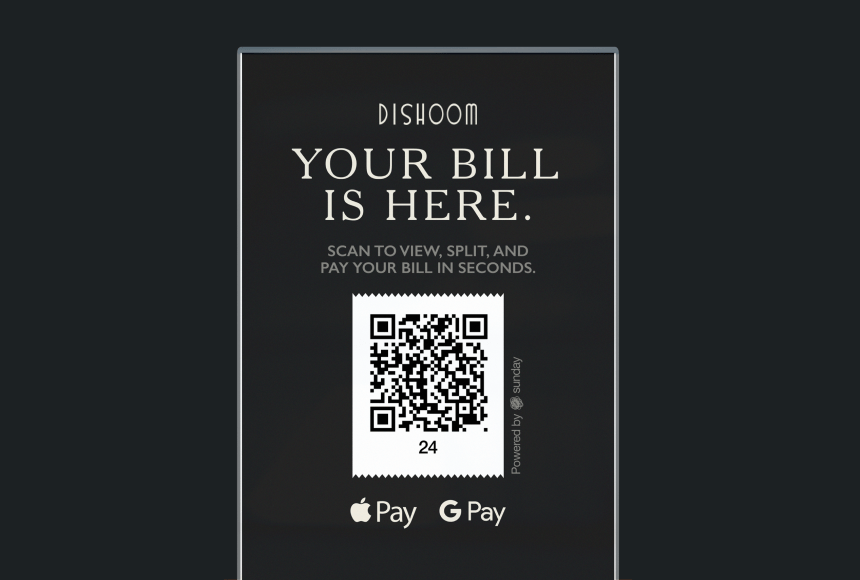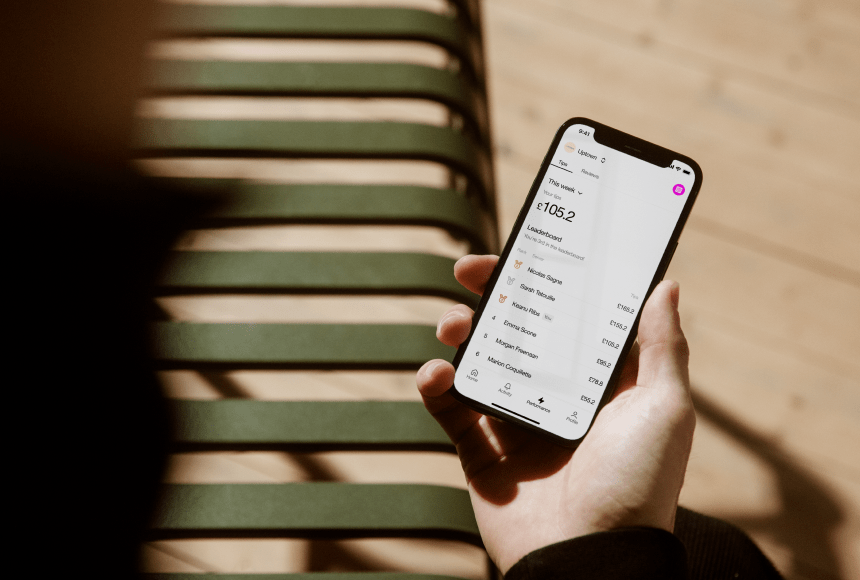
Breaking Down the Barriers: A Practical Guide to Tableside Payment Solutions
Why Are Some Restaurant Owners Still Unsure?
You’ve probably seen it in other restaurants, or perhaps you’ve heard of it from industry peers: tableside payment is on the rise across the UK. From high-end bistros in London to seaside eateries in Cornwall, more establishments are adopting faster and more convenient ways for their customers to settle the bill. Despite the uptick in popularity, however, a handful of objections continue to pop up. These objections can slow your decision to switch or even deter you altogether.
But are these concerns well-founded? Often, they boil down to understandable worries about cost, technology, customer perception, or staff training. If you’re feeling hesitant, you’re not alone. Many restaurant owners have shared the exact same concerns—only to find that tableside payment actually simplifies operations, increases turnover, and improves guest satisfaction. Let’s explore the most frequent objections you might hear (or harbour yourself) and discuss intelligent ways to address them.
Objection #1: “My customers won’t like it—people want a personal touch.”
One of the most common concerns is that using devices or QR codes at the table might diminish the personal connection between diners and servers. There’s a fear that customers will find the experience too self-service or impersonal. After all, in hospitality, warmth and personal interaction are everything. Right?
The reality is that a smooth payment experience doesn’t eliminate friendly service. In fact, it can make it easier for your staff to engage with guests. When servers no longer have to run back and forth to a traditional payment terminal at the till, they can spend more time chatting with diners. They can answer questions, recommend dessert, or share a fun anecdote about the special of the day.
- How to address it: Provide gentle guidance to customers. Servers can introduce the tableside payment process as part of normal service: “Whenever you’re ready, just scan the QR code and pay. I’m right here if you need any help.” This creates a feeling of openness and maintains the personal element.
- Reassure with staff presence: Make sure your team is still accessible for any queries, no matter how simple. This shows that the human touch hasn’t gone anywhere; it’s just better supported by technology.
Remember: Most diners are already accustomed to making contactless payments. According to UK Finance, contactless accounted for over half of all card payments in 2022—and the figure is set to grow. The technology is no longer a novelty; it’s a new norm.
Objection #2: “It’s too complicated and will confuse my staff.”
New tech can be intimidating. If you’ve got a busy establishment and a team already juggling multiple tasks, introducing another system might feel like adding chaos. Will the servers get frustrated? Will they need constant tech support?
The good news is that modern tableside payment solutions, such as scanning a QR code, are designed for simplicity. They’re intuitive for both staff and guests. If your team uses smartphones daily, they can certainly handle scanning or showing guests how to scan a code. Plus, if you opt for handheld payment terminals, they often come with user-friendly interfaces that resemble the smartphone apps most people are already comfortable with.
- How to address it: Invest in a short, focused training session. Dedicate time for your staff to practice mock payments so they feel confident. Introduce potential scenarios—like splitting bills—and encourage your team to experiment. Familiarity knocks out the fear factor.
- Choose user-friendly solutions: Not all software is created equal. Look for a platform specifically built for the hospitality industry—one that streamlines the payment process and integrates smoothly with your point-of-sale system.
Example in action: Some restaurants roll out the new system during quieter times or mid-week, letting staff get comfortable without the stress of a fully booked Friday night service. Within a few shifts, everyone’s usually on board—and staff often report enjoying the reduced workload when it comes to end-of-meal logistics.
Objection #3: “It’s too expensive.”
Any investment in your business should come with the promise of a measurable return. It’s natural to worry about the upfront cost of new devices or software. Particularly if you’re still recovering from the financial strains of recent years, you might question if tableside payment is truly worth it.
However, there are several angles to consider beyond the sticker price. By speeding up table turnover, you can often seat more customers in a single day. That could mean higher revenues even with the same number of covers. Additionally, digital payment solutions may reduce the chance of errors in payment processing or tip distribution, and less paper receipt usage can lower some operating costs.
- How to address it: Conduct a quick cost-benefit analysis. Estimate how much you could earn from quicker table turnover during peak times. Weigh that against monthly or per-transaction fees. The break-even point might be closer than you think.
- Consider scalability: Many providers offer flexible pricing models. You might start with a single device or a small number of QR-code-activated tables to see how it goes, then scale up if you like the results.
Remember that a more efficient payment system can also reduce staff stress, potentially lowering turnover and training costs over time.
Objection #4: “I’m worried about data security and payment fraud.”
Data security is a big deal in the digital era. Protecting sensitive customer information and preventing fraud is paramount, especially in hospitality, where the transaction volume can be high and quick. Some owners fear that tableside solutions might open the door to cyber threats or hacking attempts.
Modern payment technologies usually come with robust encryption and follow strict compliance standards such as PCI DSS (Payment Card Industry Data Security Standard). Whether the solution is a handheld payment terminal or a QR code for instant checkout, the best providers invest heavily in security protocols. If you choose a reputable platform, the risk is minimal—and often lower than handling phone or card details manually.
- How to address it: Ask potential providers for documentation on their encryption methods and compliance certifications. Transparent, reputable companies will be happy to show you their security credentials.
- Educate your staff: Make sure servers understand the importance of never storing card data or letting guests input card details on devices that aren’t secure. Simple procedures can ensure you stay fully protected.
Bonus tip: Tableside systems that automatically generate digital receipts cut down on paper trails and limit the risk of lost or mishandled customer details. This extra layer of privacy can offer both you and your guests peace of mind.
Objection #5: “Older diners won’t adapt to this technology.”
While it’s true that younger customers tend to be more comfortable with smartphones and apps, it’s a mistake to assume older diners are tech-averse. In the UK, more and more retirees use smartphones every day—83% of adults aged 65 and over now use the internet regularly, according to the Office for National Statistics. Many are adept at online banking and contactless payments, so scanning a QR code or tapping on a handheld device isn’t as daunting as you might think.
- How to address it: Encourage your servers to offer help proactively. A simple “If you prefer, I can show you how this works. It’s really straightforward,” can put guests at ease.
- Offer alternatives: Keep a traditional card machine on hand for any guests who truly prefer the old-fashioned way. Choice is key—when customers feel they have options, they’re generally more open to trying something new.
Often, older diners end up appreciating the simplicity once they’ve tried it. Less fumbling with bills and less time waiting can be a pleasant surprise, regardless of age.
Objection #6: “We’ll lose out on tips if people pay themselves.”
Many servers rely on tips to supplement their income, and owners want to keep their staff motivated. There’s a worry that if diners aren’t personally handing a card to a server, they might skip the tip.
In practice, tableside payment can have the opposite effect. When the tip prompt is directly on the payment screen or device, it’s right there for diners to see. Some solutions even allow a custom tip percentage. This small but convenient prompt often encourages guests to leave a token of appreciation. After all, it’s simpler to tap “Add Tip” than to rummage for coins.
- How to address it: Choose a tableside platform that clearly displays tipping options. Highlight this feature in your staff training. Reassure your team that technology can actually help them earn more, rather than cut their tips.
- Drive good service: Great tips still depend on great service. Emphasise that the best way to boost tips is through a fantastic guest experience. The method of payment is merely a final step in the customer journey.
If anything, a digital prompt can gently nudge people who otherwise might forget to leave a tip. In that sense, you’re potentially growing your staff’s earnings over time.
Objection #7: “It disrupts our restaurant’s identity.”
Your establishment has a certain vibe—maybe it’s elegant, maybe it’s quirky. You might worry that introducing new technology will disrupt the ambiance. QR codes and payment devices could appear at odds with your traditional décor and atmosphere.
Yet technology doesn’t have to be jarring. Modern design can be discreet, and you can brand it to fit your restaurant’s style. For example, you might place a small, tasteful stand-up card on each table with a custom QR code and your logo. Handheld devices can be kept in discreet holsters or at server stations until needed, so they don’t overshadow your carefully curated interior.
- How to address it: Customise your QR codes. Incorporate colours, logos, or even a short slogan that reflects your brand identity. Present them in a neat holder that complements your table setting.
- Integrate it naturally: Instruct your team to introduce the payment option in a manner consistent with your brand voice. If you’re a fun, casual place, keep it playful. If you’re high-end and formal, keep it elegant and understated.
The goal is to ensure the payment process blends seamlessly into the overall dining experience, rather than feeling like a foreign element.
Objection #8: “Our restaurant is already busy—this is just one more thing to manage.”
If you run a bustling kitchen and a full dining room most nights, you might wonder if adding new tech will tip your stress levels over the edge. However, introducing tableside payment can help alleviate some of that busyness, not add to it. The biggest time-saver is eliminating the wait at the end of the meal. Servers no longer have to juggle multiple bills at once or dash between tables and a separate payment station.
- How to address it: Roll out the new system incrementally. Start with a small section of your dining room or specific times of day—lunch service before dinner rush. This approach helps you smooth out any kinks without overwhelming the entire team.
- Focus on staff benefits: Emphasise to your team how much simpler their workflow can become. Many servers report that once they get used to the new system, they feel less rushed and are able to offer better customer service.
In busy environments, saving even 5–10 minutes per table can be a game-changer. Turnover increases, and you can seat more guests in the same amount of time, driving higher revenue.
Turning Objections into Opportunities
When you tackle these objections head-on, you don’t just overcome resistance—you transform it into a competitive advantage. Tableside payment can speed up service, reduce stress for your staff, and modernise your brand image. It also opens up extras like post-payment feedback or Google reviews right there on the spot, as offered by sunday. This direct channel helps you collect invaluable insights and boost your online reputation all at once.
Perhaps the best way to settle these doubts is to experience the benefits firsthand. Many restaurants start on a trial basis, collect feedback, and find that customers actually love the convenience. Staff enjoy faster transactions, and owners see an uptick in both table turnover and guest satisfaction.
Practical Tips for a Seamless Transition
- Set up proper training: Your team should feel comfortable explaining the process to diners, so take time to walk them through real-life scenarios. Make it fun and interactive.
- Be transparent with guests: A small card or sign on each table can inform diners that you offer tableside payment, step-by-step, so they’re not caught off-guard.
- Gather feedback: Encourage staff to relay customer reactions in team meetings. Did someone struggle with scanning? Did a group find it incredibly handy? Learn from these anecdotes to fine-tune your approach.
- Stay flexible: Keep a backup plan. If a device fails or a customer prefers a traditional card swipe, have that option readily available.
Some restaurant owners are pleasantly surprised when they realise how quickly staff and guests adapt. Like trying a new dish for the first time, it’s natural to be cautious—until you taste the benefits.
Embracing the Future without Losing Your Soul
The hospitality industry is continuously evolving. From ingredient sourcing to creative plating, change is usually a marker of progress and innovation. Payment methods are no different. By addressing common objections upfront and implementing thoughtful solutions, you’ll likely find that tableside payment doesn’t clash with your restaurant’s identity or your diners’ expectations. Instead, it can refine the experience, offering convenience and speed without sacrificing personal interaction or brand appeal.
Today’s diners are used to tech-driven convenience in other parts of their life—online shopping, mobile check-ins, even scanning digital boarding passes at the airport. Seeing a QR code or a small handheld device at their favourite eatery is less of a leap and more of a natural progression. With the right approach, you can offer an updated, efficient payment experience that still leaves room for the personal touches your guests love.
Ultimately, tableside payment is not about cutting corners or making service impersonal. It’s about working smarter, so you and your team can focus on what really matters: delivering a delightful dining experience, from the first sip of wine to the final farewell at the door.
Find out more today
Drop us your details below and we’ll reach out within the next 24
“Bill please” is a thing of the past.
With our integrated QR codes your customers pay in seconds, straight from their table.


